Finding the perfect bike that suits every type of ride is no easy feat, but the Trifox Complete Bike strikes the ideal balance between versatility, performance, and comfort.
Designed for riders who need a bike that can handle a variety of conditions, the Trifox Complete Bike offers a seamless transition from city roads to rugged trails and everything in between. Whether you're an avid commuter, weekend trail rider, or someone who enjoys the occasional adventure, this bike has you covered.
One of the key features of the Trifox Complete Bike is its versatility. Built with a flexible geometry that accommodates various riding styles, it allows you to easily switch between road biking, mountain biking, or even light touring. The durable aluminum or carbon frame is lightweight yet strong, providing excellent responsiveness and durability. The bike's design ensures that you can tackle everything from urban streets to bumpy trails with confidence, making it ideal for riders who crave diversity in their cycling experiences.
When it comes to performance, the Trifox Complete Bike is equipped with high-quality components that ensure smooth, precise shifts, whether you're climbing steep hills or cruising downhill. With responsive braking systems and a reliable drivetrain, you’ll experience an uninterrupted ride, no matter the terrain. Its adaptable tires, available in multiple sizes, provide enhanced grip and stability, giving you the confidence to ride on a variety of surfaces.
But it's not just about performance—it's also about comfort. The Trifox Complete Bike is designed with ergonomics in mind, offering features such as a comfortable saddle, adjustable handlebars, and shock-absorbing forks for a smoother ride over uneven surfaces. This ensures that long rides are as enjoyable as short ones, reducing fatigue and allowing you to focus on the experience rather than discomfort.
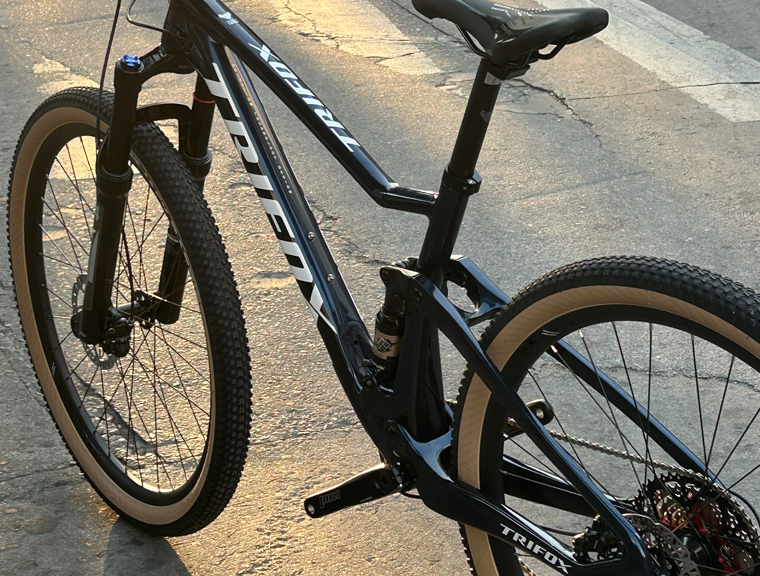
Whether you're looking to explore new trails, commute efficiently, or simply enjoy a weekend ride, the Trifox Complete Bike offers the ideal combination of versatility, performance, and comfort. Ready to ride anywhere? The all-round bike from Trifox is your perfect companion.
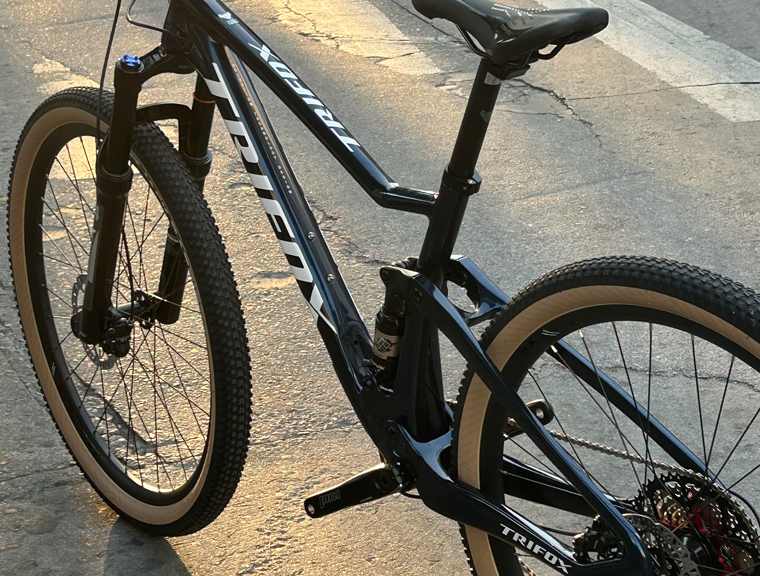
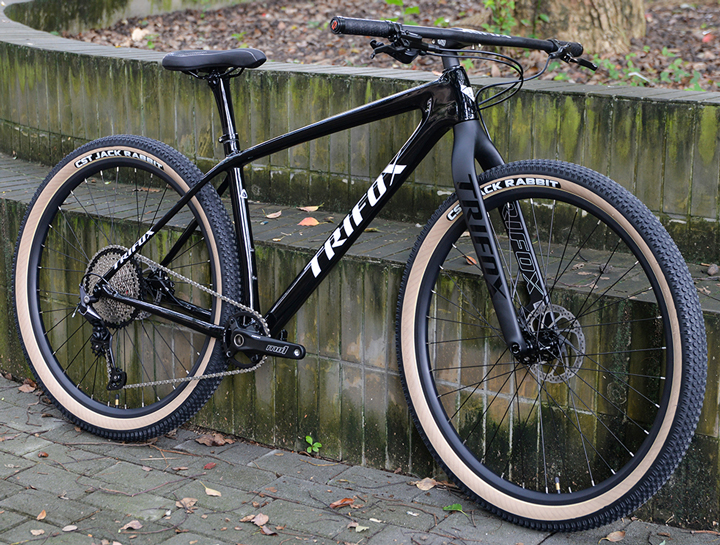
When it comes to cycling, weight matters. The lighter your bike, the faster, more agile, and efficient your ride.
Enter the Trifox SDY20, a superlight bike designed for riders who crave speed, precision, and peak performance. Crafted with cutting-edge technology and materials, this bike offers the ultimate combination of lightweight design and top-tier performance features.
The SDY20 is built with a carbon fiber frame, reducing weight without compromising on strength or durability. This design ensures maximum power transfer with minimal effort, so you can conquer steep climbs and reach top speeds on the flat.
Whether you're sprinting down a winding road or tackling a challenging trail, the SDY20's responsiveness gives you complete control.
Its aero design further enhances speed by reducing drag, while the advanced suspension system guarantees comfort and stability across various terrains. Additionally, the SDY20 comes equipped with high-quality components that ensure smooth shifting, precise braking, and long-lasting reliability.
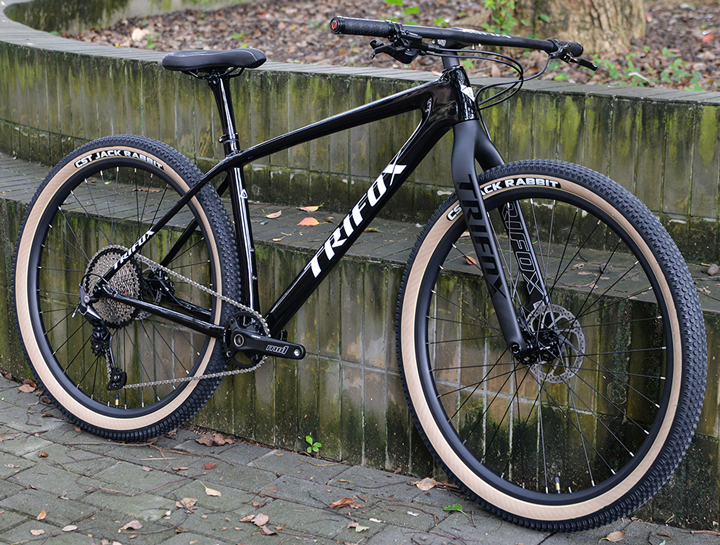
If you're a cyclist looking to push your limits and experience the thrill of unmatched agility and performance, the Trifox SDY20 is your perfect ride. It's not just a superlight bike – it's the future of cycling.
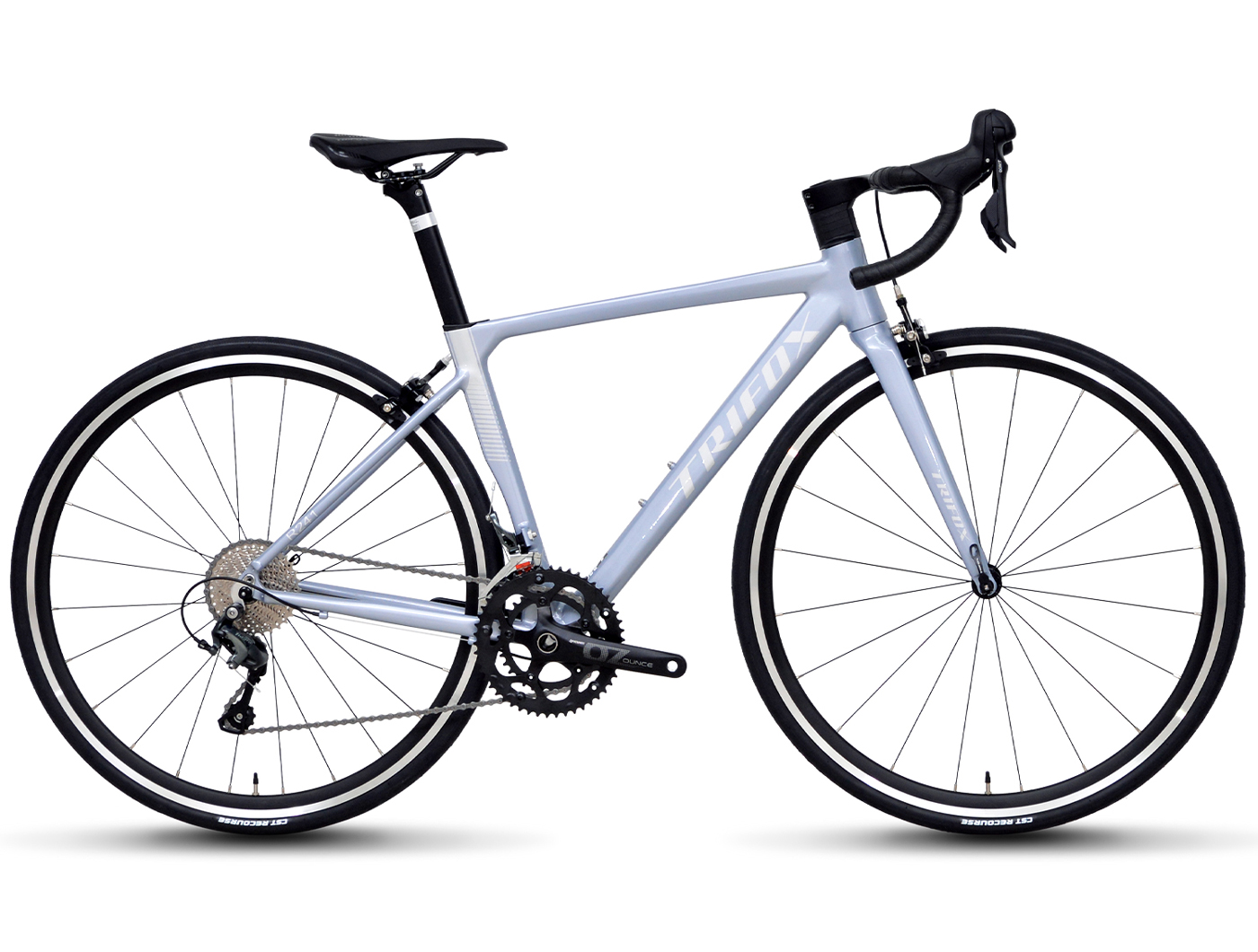
When it comes to cycling, the right bike can make a world of difference. Whether you're a seasoned cyclist or just getting started, choosing the right materials and design can elevate your performance and enjoyment on the road. One such bike option gaining traction among enthusiasts is the aluminium aero road bike. If you're in the market for a high-performance bike that offers a balance of speed, durability, and affordability, this could be the perfect choice for your next cycling adventure. But what exactly makes aluminium aero road bikes such a great option? Let’s break it down.
1. Aerodynamic Efficiency
Aerodynamics play a pivotal role in road cycling, especially if you’re looking to boost your speed and reduce fatigue over long distances. The “aero” design of these bikes is not just a cosmetic feature – it’s all about reducing wind resistance. Aluminium aero road bikes are built with sleek, aerodynamic frames that cut through the air more efficiently, allowing you to maintain higher speeds with less effort. The shape of the frame, handlebars, and even the wheels are all designed to minimize drag, giving you a noticeable advantage when racing or pushing your limits.
If you're cycling on long stretches of road or tackling challenging climbs, the aerodynamic benefits of an aluminium aero road bike can make your ride smoother and faster, helping you get the most out of your energy.
2. Lightweight Yet Strong
Aluminium is widely recognized for its excellent strength-to-weight ratio. When compared to other materials like steel or titanium, aluminium offers the perfect balance between durability and lightweight construction. A lighter bike allows for faster acceleration and better maneuverability, which can be particularly important in competitive settings or on more challenging terrains.
Unlike heavier steel frames that can feel cumbersome, an aluminium frame provides the rigidity and strength needed for a responsive and stable ride while keeping the overall weight down. This makes the aluminium aero road bike a top choice for cyclists who want to shave off seconds during a race or simply enjoy an effortless ride on hilly or winding roads.
3. Affordability and Durability
While high-end carbon fiber bikes can cost a small fortune, aluminium aero road bikes offer exceptional value without compromising on performance. For cyclists on a budget or those who are new to the sport, aluminium bikes provide a more affordable entry point without sacrificing key features like speed and durability.
Moreover, aluminium is incredibly durable and resistant to corrosion. While it may not have the same level of shock absorption as carbon fiber, it provides a solid and sturdy feel on the road, offering long-lasting reliability. This makes aluminium aero bikes an excellent choice for cyclists who want a bike that will stand up to regular use over the years, regardless of weather conditions or road surface types.
4. Versatility for Various Terrains
One of the unique advantages of the aluminium aero road bike is its versatility. Many models, like the [Trifox 700c Aluminum Alloy Aero Gravel Road Bike], are designed to handle not just smooth paved roads but also gravel and more rugged terrain. This means you can take your bike on a variety of cycling adventures – whether you're racing down a smooth highway or exploring off-road trails.
The ability to take your bike off-road adds a layer of flexibility to your cycling experience, allowing you to explore new routes without worrying about your bike’s capability to handle different types of surfaces.
5. Modern Design and Technology
Aluminium aero road bikes come with modern design elements that enhance comfort, performance, and overall ride quality. Innovations in frame geometry and componentry ensure that you’ll have a bike that handles well and is equipped with advanced technology to suit your cycling needs. Whether it's through internal cable routing for a clean look or disc brakes for enhanced stopping power in all conditions, these bikes come ready to meet the demands of both casual riders and competitive athletes alike.
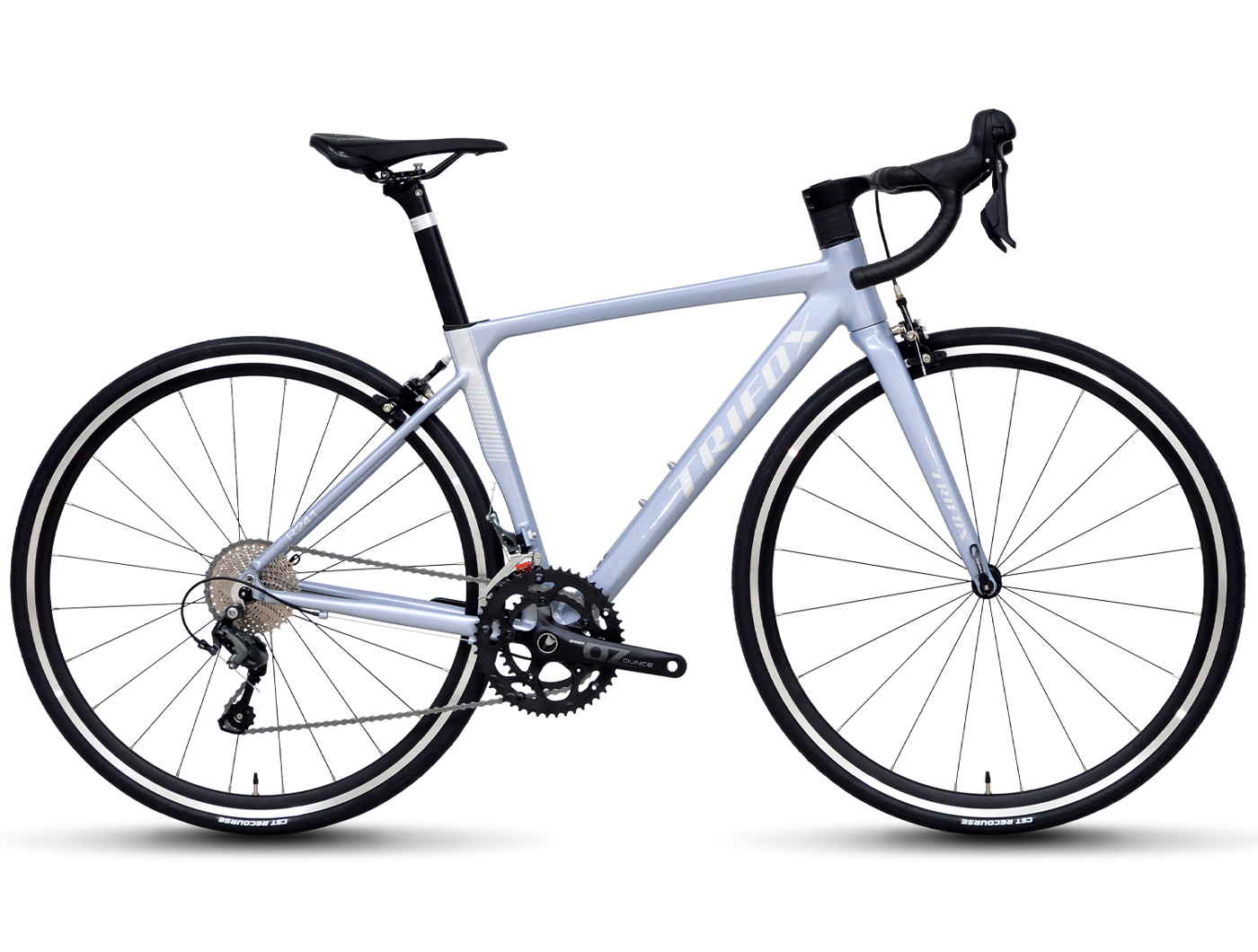
Final Thoughts
An aluminium aero road bike offers the perfect blend of aerodynamic efficiency, lightweight design, affordability, and durability. With the ability to tackle both road and gravel paths, and a host of modern features that cater to different cycling needs, it’s no wonder that this type of bike is becoming a go-to choice for cycling enthusiasts. Whether you're preparing for your next big cycling adventure or just looking to upgrade your current setup, the aluminium aero road bike is a worthy investment that promises performance, versatility, and value.
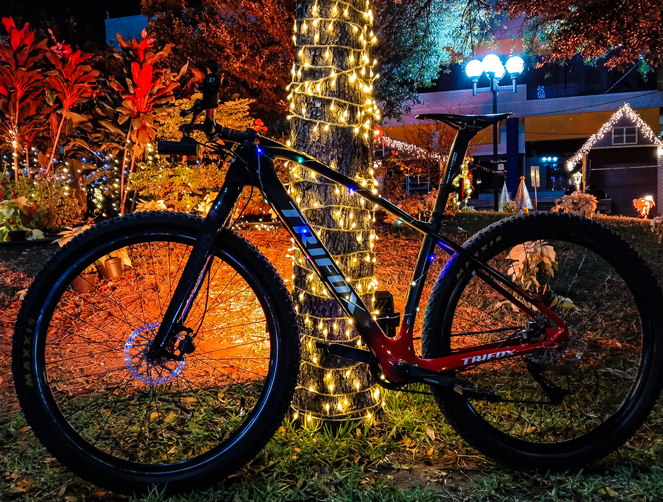
Mountain biking on tough, rugged trails can be a thrilling challenge, but it requires the right bike and technique to get the most out of every ride. If you're riding a Hardtail MTB M2 Bike, you're already ahead of the game. The Trifox M2 Bike, a hardtail mountain bike with a lightweight carbon frame, is designed to handle tough trails with ease, offering the perfect combination of speed, agility, and performance. However, to fully maximize the potential of your hardtail MTB on challenging terrain, there are a few key strategies and tips you can follow.
1. Optimize Your Tire Pressure for Better Traction
When riding on tough trails, tire pressure plays a critical role in maximizing traction and ensuring a smooth ride. Too much pressure can lead to less grip and a harsher ride, especially when hitting rocks, roots, and uneven surfaces. On the other hand, too little pressure may cause your tires to squish, increasing the chances of a pinch flat.
For the Trifox Hardtail MTB M2 Bike, consider running slightly lower tire pressure for better grip on rough trails. Typically, the ideal pressure range for mountain bike tires is between 30-40 PSI, but this can vary based on your weight, riding style, and trail conditions. Lower pressure allows your tires to conform to the terrain, increasing the surface area in contact with the ground and improving traction, especially on loose dirt, gravel, and wet conditions.
Remember to check your tire pressure before each ride, especially on tougher terrain, as it can significantly impact your ride quality and control.
2. Set Up Your Suspension for Performance
Although the Hardtail MTB M2 Bike is a hardtail, meaning it doesn’t have rear suspension, it’s still crucial to fine-tune your front suspension fork for maximum performance. The front suspension is the primary shock absorber on a hardtail, and adjusting it properly can make a world of difference when tackling rough trails.
For tougher trails, you’ll want to adjust the rebound damping and compression settings of your front suspension. If you're encountering a lot of rough, rocky terrain, a slightly higher rebound setting will allow the suspension to recover faster between bumps, giving you more control on the trail. Similarly, the compression settings can be adjusted to match the trail conditions—more compression for aggressive, technical riding or less compression for smoother trails.
The Trifox M2 Bike features a high-quality suspension fork, so take the time to experiment with different settings until you find the optimal balance for your riding style and the type of trails you frequent. Fine-tuning the suspension will help improve both comfort and control.
3. Master Your Riding Technique on Tough Terrain
While your Hardtail MTB M2 Bike is built for speed and control, how you ride it on tough trails makes a huge difference in your performance. Here are some key tips for riding efficiently on rough terrain:
Stay Loose and Relaxed: When riding over technical sections like rocks, roots, and drops, it’s important to stay loose on the bike. This means keeping your elbows and knees slightly bent, absorbing bumps with your body, and letting the bike move beneath you. Tensing up can cause unnecessary fatigue and reduce your control on the trail.
Choose Your Lines Wisely: On tough trails, you’ll need to pick the best line through obstacles to avoid unnecessary jarring impacts. Look ahead and plan your path, aiming for smoother sections of the trail while avoiding larger rocks and roots when possible.
Keep Your Pedal Stroke Smooth: Hardtail bikes require a smoother pedal stroke, especially when climbing or riding over uneven terrain. On rocky or uphill sections, try to maintain a consistent rhythm with your pedaling to avoid jarring stops or stalls.
4. Use Your Brakes Strategically
Braking is an essential skill when navigating tough trails. On a Hardtail MTB M2 Bike, you don’t have the rear suspension to help absorb the shock when you brake hard, so it’s important to use your brakes efficiently to avoid losing control.
For technical sections or steep descents, use both brakes evenly and focus on modulating them to control your speed. Avoid slamming on the brakes, especially in slippery or loose conditions, as this can cause you to lose traction and control. Instead, apply steady, controlled braking, and focus on using the front brake to slow down gradually, while the rear brake helps with stability.
5. Maintain Your Hardtail MTB M2 Bike Regularly
A key part of getting the most out of your Hardtail MTB M2 Bike is regular maintenance. A well-maintained bike will perform better and last longer, especially when it’s being subjected to the rigors of tough trails. Here are a few maintenance tips to keep your bike in peak condition:
Check your chain and drivetrain regularly for wear and tear, as rough trails can put additional strain on these components.Inspect your tires for cuts, punctures, and proper pressure. Worn-out tires can significantly reduce your traction on tough terrain.Lubricate the suspension fork to ensure it moves smoothly and absorbs shocks effectively.
6. Embrace the Hardtail Experience
Lastly, remember that riding a hardtail like the Trifox Hardtail MTB M2 Bike requires a different approach compared to full-suspension bikes. While full-suspension bikes provide more comfort on rough trails, hardtails like the M2 offer increased efficiency, lighter weight, and better pedaling performance. Embrace the challenge of the hardtail design, and use the bike’s responsiveness to your advantage on smooth sections, climbs, and sprints.
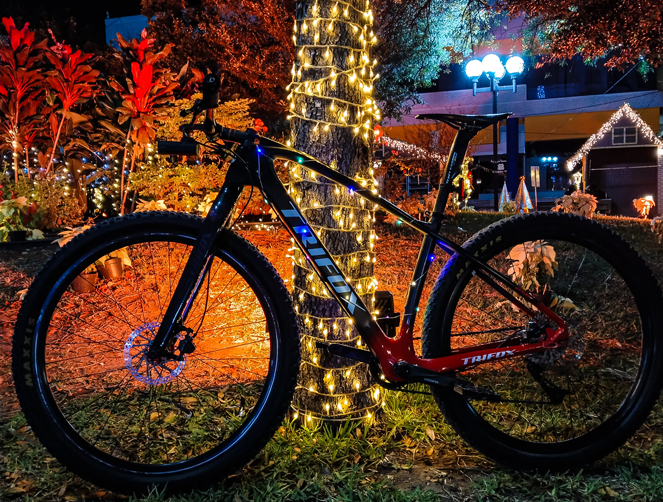
Conclusion
The Hardtail MTB M2 Bike is a fantastic choice for mountain bikers who want to conquer tough trails with efficiency and speed. By optimizing your tire pressure, fine-tuning your suspension, mastering riding techniques, and performing regular maintenance, you can get the most out of your hardtail and enjoy a smoother, more controlled ride on even the most challenging terrain. Whether you're navigating rocky descents, sharp turns, or steep climbs, your Hardtail MTB M2 Bike will help you ride with confidence and performance on tough trails.
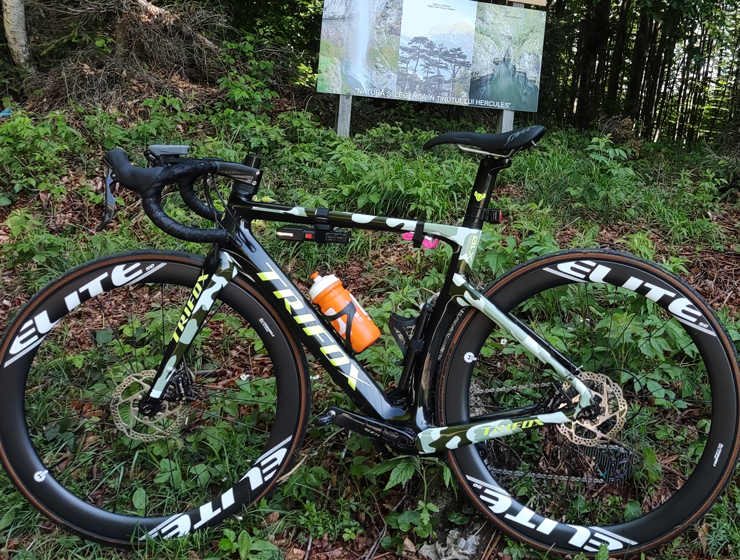
When it comes to cycling, the idea of a "one-size-fits-all" bike is simply not a reality. Every cyclist is unique, with different body types, riding styles, and needs. Whether you're a seasoned racer, a commuter, or a casual weekend rider, finding the right bike can make all the difference in your comfort, performance, and overall enjoyment. In this blog post, we’ll explore how you can choose the perfect bike for your needs and highlight some great options, such as the Trifox Disc Brake Carbon Road Bike Frame X10, that can accommodate a wide range of riders.
1. Understanding the Basics of Bike Fit
The first step in selecting a bike is understanding the importance of bike fit. A well-fitting bike can reduce discomfort, improve efficiency, and prevent injuries. When choosing a bike, there are several factors to consider, including frame size, geometry, and the type of riding you plan to do. A road bike frame, for instance, will differ from a mountain bike frame in terms of angles, material, and design to suit the intended riding environment.
If you're new to cycling or uncertain about your fit, it’s worth visiting a local bike shop where professionals can help you find the right size and adjust the bike for your specific body measurements.
2. Versatility of the Trifox X10 Carbon Road Bike Frame
A perfect example of a bicycle suitable for a wide range of riders is the Trifox Disc Brake Carbon Road Bike Frame X10. This bike is designed with versatility in mind, offering a comfortable ride for both beginners and more experienced cyclists. Whether you're using it for commuting, weekend rides, or racing, this carbon road bike frame can be customized to meet various rider needs.
The X10 frame is made from high-quality carbon fiber, which provides a lightweight yet durable structure. Carbon fiber is known for its ability to absorb vibrations, offering a smoother ride over rough surfaces. Additionally, carbon frames can be stiffer than aluminum, improving power transfer, making the X10 ideal for riders who want an efficient bike for both speed and comfort.
3. Frame Geometry for Different Riders
The geometry of a bike frame determines its overall fit, comfort, and handling characteristics. The Trifox X10 features an aerodynamic and balanced design, with a slightly relaxed riding position that is comfortable for long rides without compromising speed. The frame is designed to accommodate different riders, from those who prioritize comfort to those who prefer a more aggressive, race-ready position.
For beginner cyclists or those who spend most of their time on flat roads, a more upright position may be preferable. The X10's geometry allows for easy adjustment of handlebars and saddle to create a more comfortable, relaxed posture. For more experienced riders or those seeking performance on faster rides, the aggressive drop of the handlebars can position the rider lower and forward, reducing wind resistance for improved aerodynamics.
4. Disc Brakes for All Conditions
One of the key features of the Trifox X10 is its disc brake system, which provides better stopping power in all weather conditions. Whether you're riding in the rain or on steep hills, disc brakes offer superior performance compared to traditional rim brakes. This makes the bike suitable for a variety of riders, including those who live in areas with challenging weather conditions or who like to explore diverse terrains. Disc brakes also provide more control and stability, which is especially important for newer riders or those who prioritize safety.
5. Customization and Future-Proofing
The Trifox X10 is built with future-proofing in mind. As cyclists' needs evolve, the ability to customize your bike is crucial. The frame can be paired with a variety of components, such as wheels, handlebars, and saddles, to suit personal preferences. This flexibility ensures that the bike grows with the rider, offering long-term value and adaptability.
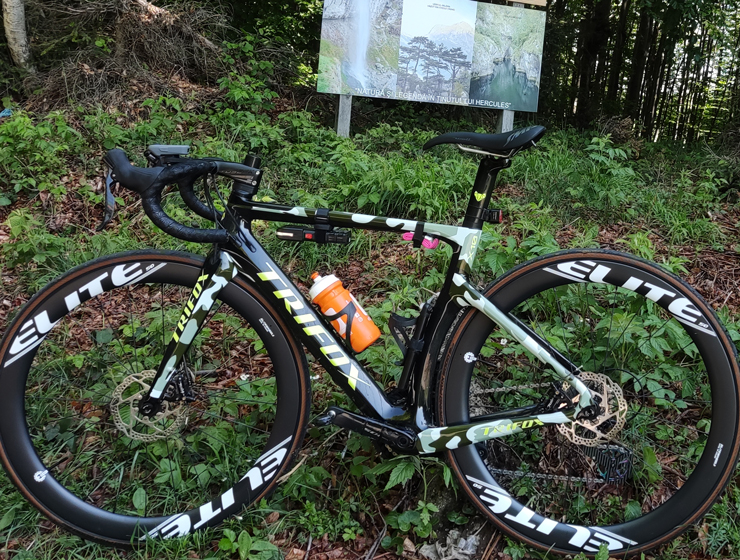
Finding the perfect bike doesn’t have to be a daunting task. Whether you're a beginner or an experienced cyclist, there are plenty of options that cater to different needs. The Trifox Disc Brake Carbon Road Bike Frame X10 is a great example of a versatile bike suitable for a wide range of riders.
With its lightweight carbon frame, customizable fit, and advanced disc brake system, the X10 ensures that cyclists of all experience levels can enjoy a smooth, comfortable, and safe ride. So, take the time to explore your options and choose the bike that fits your unique riding style — your perfect fit is out there!
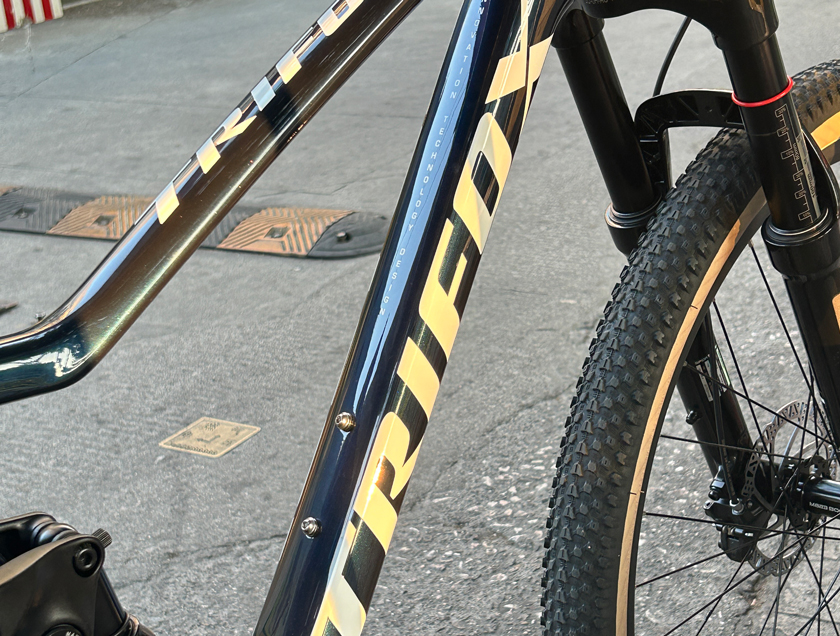
When it comes to mountain biking, especially for trail riders, choosing the right bike can make a world of difference. One of the most debated decisions among cyclists is whether to opt for a dual suspension bike or stick with a hardtail. Dual suspension bikes, which feature both front and rear shocks, are known for their ability to absorb impacts and provide a smoother ride on rough terrain. However, they come with a higher price tag and more maintenance. So, are dual suspension bikes really worth the investment for trail riders? Let’s break it down.
1. Superior Comfort on Rough Terrain
One of the most obvious advantages of dual suspension bikes is the comfort they provide. Trail riding often involves navigating rocky paths, bumpy trails, and obstacles that can create significant jolts and impacts. Hardtail bikes, which only have a suspension fork at the front, can transfer a lot of that shock directly to the rider, leading to discomfort, fatigue, and a less enjoyable ride.
Dual suspension bikes, like the Trifox Pioneer Bike, are equipped with both front and rear shocks that work together to absorb impact. This creates a much smoother ride, allowing you to handle rough terrain with greater ease. The rear suspension helps to absorb shocks from bumps and drops, making the ride more comfortable and reducing the risk of injury from jarring impacts. For trail riders who often encounter technical terrain or prefer longer rides, the added comfort of dual suspension can be a game-changer.
2. Better Control and Handling
Dual suspension bikes also offer superior control and handling compared to hardtails, especially on downhill and technical sections of the trail. The rear suspension helps to keep the rear wheel planted on the ground, improving traction and stability. This is particularly important when navigating loose gravel, wet conditions, or steep descents, where maintaining control is crucial.
The Trifox Pioneer Bike is designed with a robust dual suspension system that enhances handling, even in challenging conditions. The bike’s front and rear shocks work in unison to maintain tire contact with the ground, providing more consistent traction and allowing you to tackle technical sections with confidence. Whether you’re navigating tight switchbacks or blasting down a rocky descent, the improved stability and control that come with dual suspension can make a noticeable difference in your performance.
3. Reduced Fatigue on Long Rides
Riding on rough terrain can be exhausting, particularly on long rides. The constant jarring and bouncing of a hardtail bike can take a toll on your body, leading to fatigue and discomfort. On the other hand, dual suspension bikes reduce the impact forces that travel through your body, making the ride less taxing. This is especially beneficial for trail riders who enjoy longer rides or multi-day adventures.
The Trifox Pioneer Bike offers excellent suspension performance that helps reduce the strain on your arms, legs, and back. With the rear suspension absorbing much of the shock, riders can focus on the ride itself rather than worrying about fatigue or discomfort. If you’re planning on tackling challenging trails or going for long-distance rides, the added comfort and reduced fatigue provided by dual suspension will allow you to ride longer and harder without burning out.
4. Increased Safety and Confidence
A well-designed dual suspension system can also increase your safety on the trails. By providing better traction, stability, and control, these bikes help riders stay in control during high-speed descents, technical maneuvers, and challenging terrain. When you’re riding on a bike that feels stable and secure, you’re more likely to take on challenging obstacles with confidence.
The Trifox Pioneer Bike is equipped with advanced suspension technology that enhances both safety and performance. Whether you’re descending a steep hill or negotiating an uneven rock garden, the bike’s suspension keeps you in control and minimizes the risk of losing traction or control. This makes dual suspension bikes an excellent choice for riders who enjoy pushing their limits and tackling more advanced trail features.
5. The Cost vs. Benefits Debate
Of course, dual suspension bikes come with a higher price tag compared to hardtails. The additional cost is typically due to the more complex suspension systems, higher-quality components, and additional maintenance required. For some riders, especially those just starting out or those who primarily ride smooth trails, a hardtail might offer all the performance they need at a more affordable price.
However, for serious trail riders who often ride on rough, technical trails, the benefits of a dual suspension bike are hard to ignore. The increased comfort, better control, and reduced fatigue make the higher investment well worth it for riders who want to maximize their performance and enjoy a smoother, more enjoyable ride.
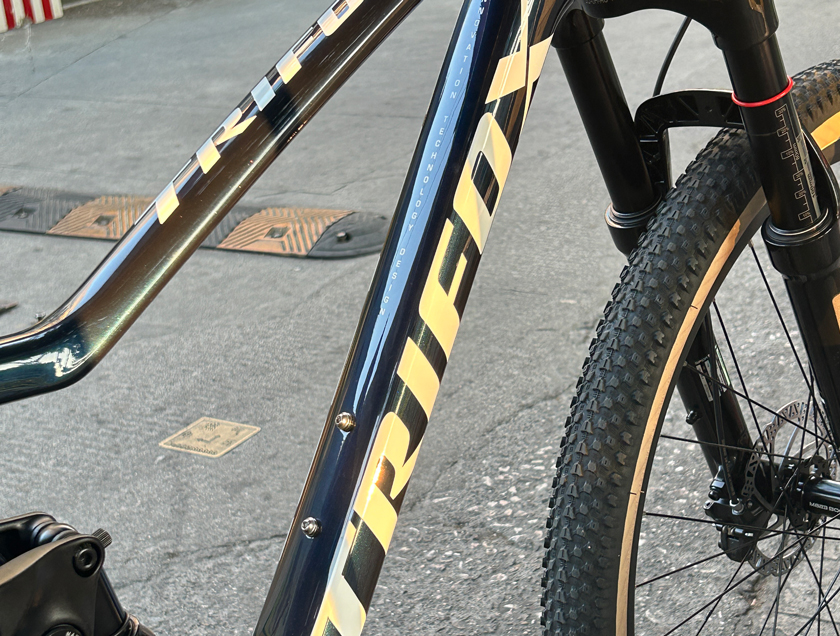
So, are dual suspension bikes really worth the investment for trail riders? The answer largely depends on the type of riding you do and your priorities as a cyclist. If you regularly ride on rough, technical terrain or enjoy long-distance trail rides, a dual suspension bike like the Trifox Pioneer Bike can significantly improve your ride quality, comfort, and performance. While they do come with a higher price tag, the added benefits of better control, reduced fatigue, and increased safety make them an excellent choice for serious trail riders who want to take their biking experience to the next level.
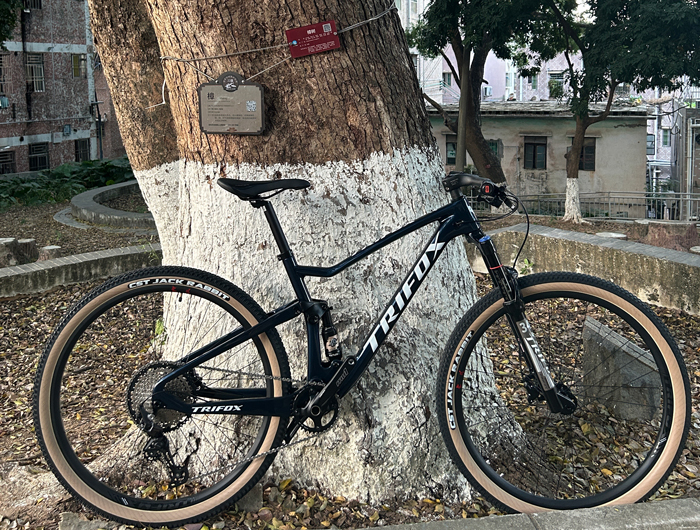
If you're new to mountain biking or just exploring the different types of bikes available, you may have come across the term “suspension bike.” But what exactly does that mean, and how does it affect your riding experience? Whether you're hitting rugged trails, tackling rocky descents, or simply exploring the outdoors, suspension bikes are designed to provide better comfort, control, and performance on rough terrain. In this post, we’ll break down what suspension bikes are, how they work, and why they might be the right choice for you.
What Is a Suspension Bike?
A suspension bike is a type of bicycle that is equipped with a suspension system to absorb shock and reduce the impact of rough terrain. Unlike traditional rigid bikes, which have a solid frame and fork, suspension bikes feature shock-absorbing components in the front (the fork) and/or the rear (the frame or rear shock). This suspension system helps smooth out bumps, rocks, and other obstacles on the trail, giving riders a more comfortable and controlled experience.
There are two main types of suspension bikes: front suspension (also known as hardtail) and full suspension. Let’s explore each type in more detail.
Front Suspension (Hardtail)
A front suspension bike, or hardtail, has a shock-absorbing fork at the front of the bike but does not have suspension in the rear. The fork is designed to absorb shocks from obstacles like rocks, roots, and bumps, helping to keep your hands and arms from getting jarred. Hardtail bikes are generally lighter, more efficient, and require less maintenance than full-suspension bikes, making them an excellent choice for cross-country riders or those who primarily ride on less technical terrain.
Advantages of Front Suspension Bikes:
- Lighter weight
- More efficient pedaling (especially on smooth trails)
- Lower maintenance costs
- Ideal for cross-country and less technical riding
Disadvantages:
- Less control and comfort on very rough or technical terrain compared to full-suspension bikes
Full Suspension
Full suspension bikes, as the name suggests, have both front and rear suspension systems. The front fork absorbs impacts from the terrain, while the rear shock (or shock absorber) does the same for the rear of the bike. This system is ideal for riders tackling more technical trails, downhill tracks, or rugged mountain routes, as it significantly enhances comfort and control. The rear suspension helps maintain traction, preventing the rear wheel from bouncing off the ground and giving you better control over the bike’s handling.
The rear shock in full suspension bikes can be adjusted for different types of terrain, allowing riders to fine-tune the bike’s performance based on their specific needs.
Advantages of Full Suspension Bikes:
- Better comfort and control on rough terrain
- Increased traction and stability, especially on downhill or technical trails
- More forgiving ride for beginners or those new to mountain biking
Disadvantages:
- Heavier than hardtail bikes
- Requires more maintenance due to additional components
- More expensive compared to front suspension bikes
How Does a Suspension Bike Work?
Suspension systems use a combination of springs and dampers to absorb and control shock. When the bike encounters a bump, rock, or other obstacles, the suspension compresses to absorb the impact, and then it returns to its original position, thanks to the spring and damper combination. The damper controls the speed of the spring’s return, ensuring a smooth and controlled recovery. This reduces the jarring feeling you would otherwise experience on a rigid bike, improving overall comfort and stability.
Key Components of a Suspension System:
1. Fork (Front Suspension): The fork absorbs the shock at the front of the bike and helps keep your hands and arms steady when riding over rough terrain.
2. Rear Shock (Full Suspension): The rear shock absorbs impacts in the rear of the bike, providing additional comfort and traction.
3. Shock Absorbers (Springs and Dampers): These are the core components that control the compression and rebound of the suspension, ensuring that the ride is smooth and stable.
Why Choose a Suspension Bike?
If you're planning on riding in rough or rocky terrain, or if you want to tackle more technical trails, a suspension bike will make a significant difference in your experience. Suspension bikes are designed to enhance control and comfort, especially on uneven or bumpy surfaces. Here are a few reasons why you might opt for a suspension bike:
- Improved Comfort: Suspension systems help reduce the impact of bumps and vibrations, leading to a more comfortable ride. This is especially important for long rides or trails with lots of obstacles.
- Better Control: With both front and rear suspension, you get more traction and stability, helping you maintain control when going over rough terrain, steep descents, or obstacles.
- Increased Confidence: A suspension bike makes it easier to navigate technical trails without worrying about losing control or hurting yourself from the impact of bumps and drops.
- Versatility: Suspension bikes, particularly full-suspension models, are great for a wide range of terrains, from cross-country routes to downhill trails.
The Trifox MFM100 Full Suspension Carbon MTB Frame
For those looking to invest in a high-performance mountain bike, the [Trifox MFM100 Full Suspension Carbon MTB Frame] is an excellent option. Featuring a lightweight, durable carbon fiber frame and advanced suspension technology, this bike offers enhanced shock absorption, traction, and overall control, making it perfect for mountain biking enthusiasts looking to take on challenging terrains. With its stiff and responsive frame design, the Trifox MFM100 is an ideal choice for riders who want the perfect balance of comfort, performance, and durability.
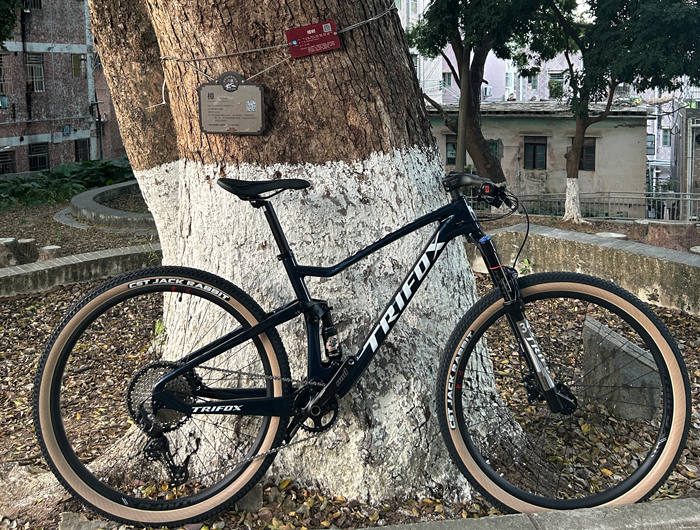
Final Thoughts
Whether you opt for a front suspension (hardtail) or full suspension bike, suspension systems are a key feature for riders who want to improve comfort and performance on rough terrain. By absorbing shocks and maintaining traction, suspension bikes make riding on challenging trails smoother and more enjoyable. With options ranging from lightweight hardtails to full-suspension models like the Trifox MFM100, there’s a bike to suit every type of rider and riding style.
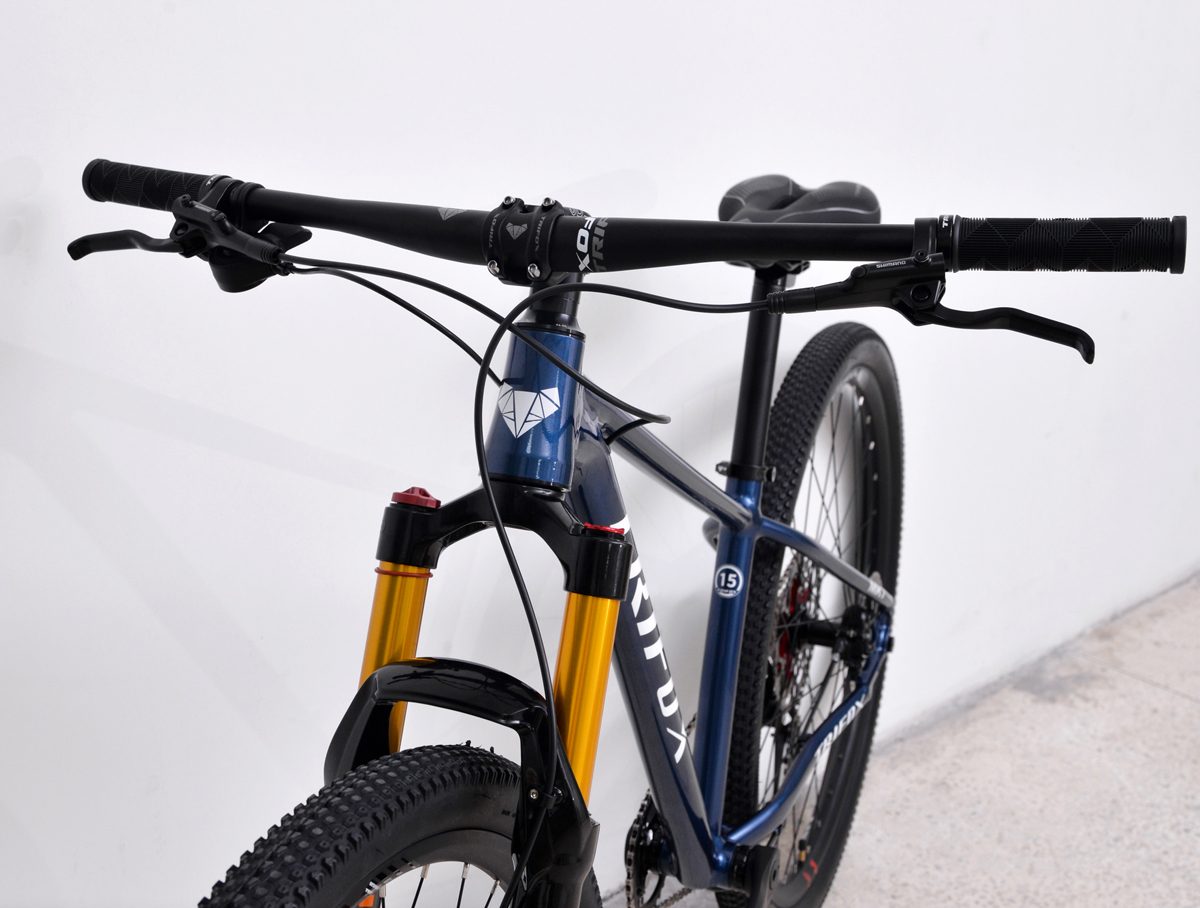
When it comes to mountain biking, having the right bike for the terrain is essential for both performance and enjoyment. Among the many choices available, the PeakTrail Xtreme MK7 Aluminum Mountain Bike stands out as a top contender for trail enthusiasts. This bike, designed for rugged terrain and built to withstand the toughest trails, offers a combination of lightweight durability, smooth handling, and advanced features that set it apart from other trail bikes.
1. Lightweight Yet Durable Aluminum Frame
One of the standout features of the PeakTrail Xtreme is its aluminum frame, which strikes the perfect balance between strength and weight. While many high-performance mountain bikes use heavier steel or more expensive carbon fiber frames, the aluminum frame of the PeakTrail Xtreme MK7 offers exceptional durability without adding unnecessary weight.
This makes it easier to tackle steep climbs and challenging terrains without being weighed down. The aluminum construction also means the bike is highly resistant to corrosion, ensuring that it can handle the elements and continue to perform season after season, whether you’re riding through muddy trails, wet conditions, or rocky surfaces.
For riders looking for a bike that delivers both power and agility, the PeakTrail Xtreme’s lightweight design allows for faster acceleration and greater maneuverability, giving you a competitive edge on technical sections and tight corners.
2. Advanced Suspension for Smooth Rides
Mountain biking often involves tackling rough, uneven trails, and the PeakTrail Xtreme is equipped with an advanced suspension system that absorbs shocks and provides a smoother, more comfortable ride. With a front suspension fork designed to cushion impacts from bumps, rocks, and roots, the bike is optimized for trail riding. This suspension system is particularly beneficial when you encounter rocky or root-heavy trails, as it absorbs the vibrations and helps you maintain control.
While many trail bikes may only have basic suspension systems, the PeakTrail Xtreme ensures that every ride, whether uphill or downhill, remains comfortable and controlled, even on challenging terrain. This is essential for maintaining stability and confidence while riding through technical sections, making it easier to focus on your performance rather than worrying about discomfort or lack of control.
3. Superior Handling and Control
Control is paramount for mountain bikers, and the PeakTrail Xtreme MK7 excels in this area. The geometry of the bike is specifically designed to offer superior handling, allowing riders to navigate tight turns, rough descents, and uneven terrain with ease. The bike’s geometry provides a stable and responsive ride, enabling better control during technical descents and tight corners.
The wide tires on the PeakTrail Xtreme further enhance grip, improving traction on slippery or rocky trails. This allows for better control when navigating steep slopes or loose gravel, so you can confidently take on obstacles without worrying about losing grip or stability.
Whether you’re riding through switchbacks or descending from a mountain trail, the PeakTrail Xtreme provides the level of control that ensures you’re always in charge, regardless of the conditions.
4. Versatile Components for a Range of Terrains
The PeakTrail Xtreme is designed to handle a wide range of terrains, from smooth, fast-flowing trails to rugged, technical tracks. The bike is equipped with high-quality components that improve performance across different terrains. This includes an efficient gear system that allows for smooth shifting, helping you power through climbs and keep up speed on flat sections.
Additionally, the strong, reliable brakes give riders confidence on downhill runs, ensuring you can stop quickly and safely when navigating tricky sections. The combination of components ensures that the PeakTrail Xtreme is versatile enough for different riders, from beginners to more experienced bikers, and can be trusted in various riding conditions.
5. Durability for Long-Term Use
Mountain biking can be demanding on both the rider and the bike, but the PeakTrail Xtreme MK7 is built to endure. Thanks to its durable aluminum frame and rugged components, this bike can handle frequent use, from aggressive trail riding to weekend adventures. The reinforced parts are designed to stand up to the harsh conditions of off-road cycling, including mud, dirt, water, and rocks.
For serious mountain bikers, durability is key—no one wants to invest in a bike that will break down after a few rides. The PeakTrail Xtreme provides long-term performance, allowing riders to take on challenging trails without worrying abohigh-performance trail bikes come with a steep price tag, the PeakTrail Xtreme MK7 offers exceptional value for money. By using aluminum for the frame and combining it with reliable suspension and components, this bike delivers solid performance without breaking the bank. For riders who want a durable, high-performing bike without paying for top-tier carbon frames or overly expensive designs, the PeakTrail Xtreme offers an excellent balance of quality and affordability
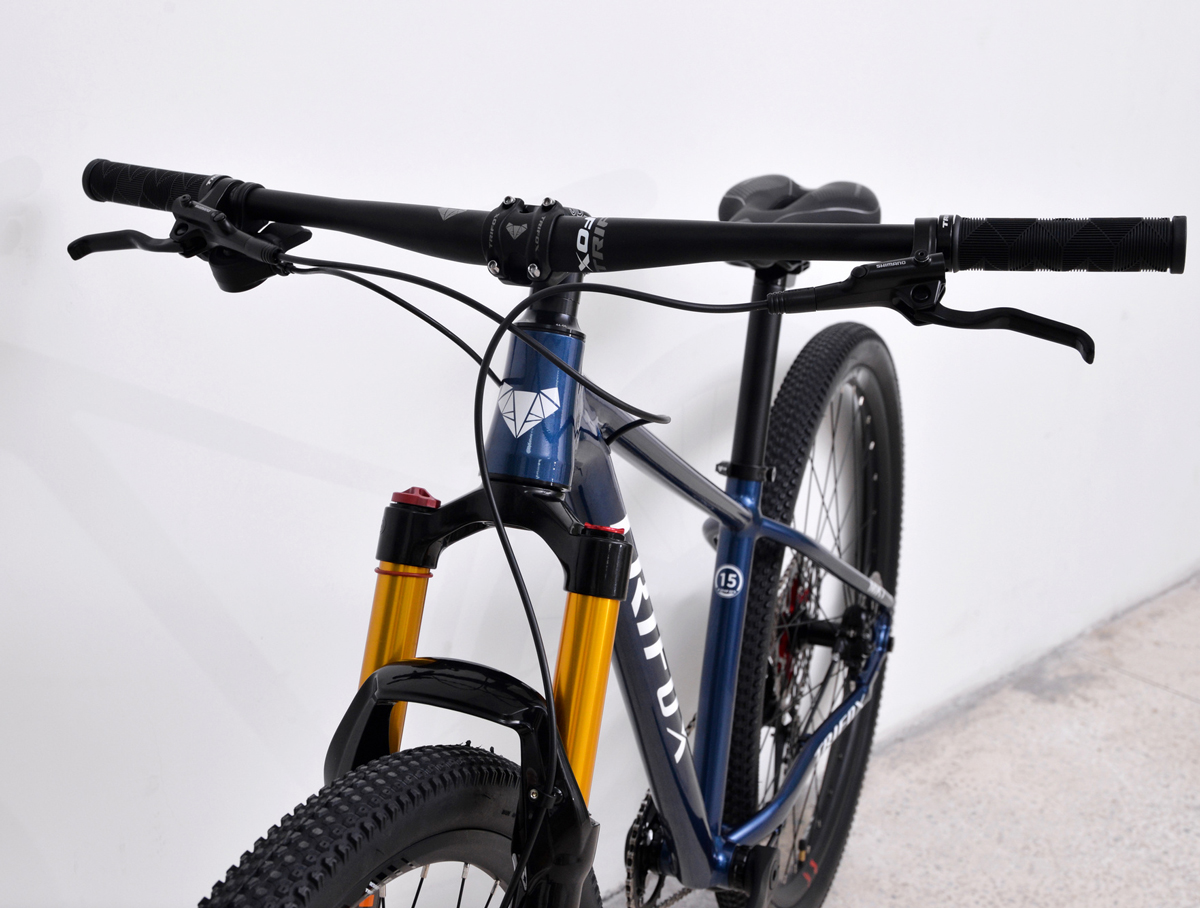
The PeakTrail Xtreme MK7 Aluminum Mountain Bike is a standout choice for anyone looking to take their trail riding to the next level. Its lightweight yet durable aluminum frame, advanced suspension system, superior handling, and reliable components make it a top contender in the mountain biking world.
Whether you’re a beginner looking for a versatile bike to tackle different trails or an experienced rider who demands control and performance, the PeakTrail Xtreme offers the perfect combination of durability, speed, and comfort to make every ride an adventure.
文字
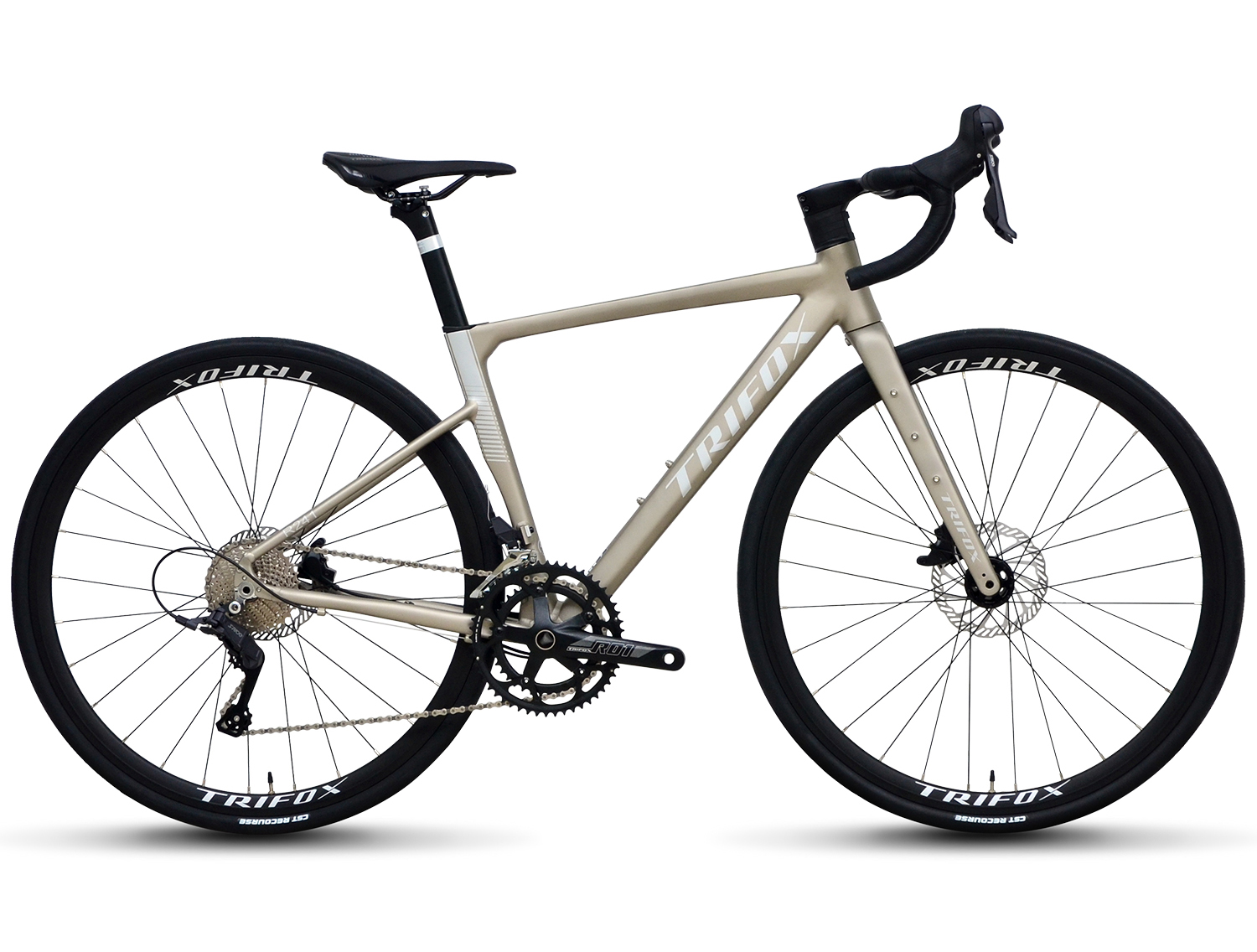
For cycling enthusiasts and competitive riders, the quest for speed is an ongoing challenge. Every part of the bike contributes to the overall performance, from the frame material to the gearing system. Among the most popular choices for speed-focused cyclists is the 11-speed aero road bike. These bikes promise improved aerodynamics, faster shifting, and a more efficient ride, but the question remains: is an 11-speed aero road bike worth the investment for those who are serious about speed?
1. Precision Shifting and Gear Range
One of the most significant upgrades you get with an 11-speed system is the increased gear range and smoother, faster shifting. Compared to a 10-speed bike, an 11-speed drivetrain allows for more closely spaced gears. This means you can make finer adjustments in your cadence, ensuring that you always find the perfect gear to optimize your pedaling efficiency—whether you're powering through flat stretches or tackling a challenging climb.
The added gears also give you a broader range, helping to maintain speed on varying terrains. For speed enthusiasts, having the ability to fine-tune your gear selection in response to changes in gradient or wind conditions is a huge advantage. In races or time trials where every second counts, this level of precision can make the difference between a podium finish and an also-ran result.
2. Aerodynamics and Speed
An aero road bike is designed with one goal in mind: speed. The frame geometry is optimized to reduce drag, and the bike’s overall design helps the rider achieve a more aerodynamic position. Combined with the 11-speed drivetrain, which allows for more efficient power transfer, an aero road bike helps cyclists maintain higher speeds with less energy.
The Trifox 2024 R241, for example, features a carbon fork and aluminum frame, a combination that delivers both aerodynamics and durability without sacrificing weight. The lighter frame, combined with the aerodynamic design, reduces wind resistance, allowing cyclists to achieve faster speeds with less effort. For speed enthusiasts, this means that you can ride faster, use less energy, and maintain high speeds over longer distances.
3. Better Control with Disc Brakes
In addition to the performance benefits of the 11-speed system, modern aero road bikes like the Trifox R241 come equipped with disc brakes. Disc brakes provide superior stopping power, especially in wet or variable conditions, allowing for better control at high speeds. For speed enthusiasts, having the confidence to brake effectively—without compromising safety or control—is crucial when navigating downhill stretches or tight corners during competitive events.
When you're pushing your bike to its limits, knowing that your braking system can handle the demands of high-speed riding offers peace of mind, ensuring you can focus on performance without worrying about safety concerns.
4. Enhanced Durability and Performance Over Long Distances
While the initial investment in an 11-speed aero road bike may seem steep, these bikes are built for durability. The quality of materials, such as the aluminum frame and carbon fork found in the Trifox R241, is designed to withstand the demands of long-distance rides, high-speed sprints, and tough training sessions. Aero bikes are engineered for riders who are pushing their limits, and these frames can handle the stress of aggressive riding.
Moreover, the S-Ride 2x11-speed groupset offers smooth, responsive performance over time, even as it experiences wear and tear. The added durability ensures that you're not just buying a bike for today but investing in a machine that will serve you well through many seasons of racing and training.
5. The Cost-to-Performance Ratio
One of the key considerations when purchasing any high-performance bike is the cost-to-performance ratio. While an 11-speed aero road bike like the Trifox R241 may come at a premium price compared to entry-level models, the performance gains in terms of speed, efficiency, and aerodynamics make it a worthwhile investment for serious cyclists. If speed is your top priority, the precision and control offered by an 11-speed system can significantly enhance your overall riding experience.
For speed enthusiasts, the ability to gain an edge in both training and competition can justify the investment. When you factor in the long-term durability and the advanced features like disc brakes and aerodynamic frame design, an 11-speed aero road bike offers both performance and value.
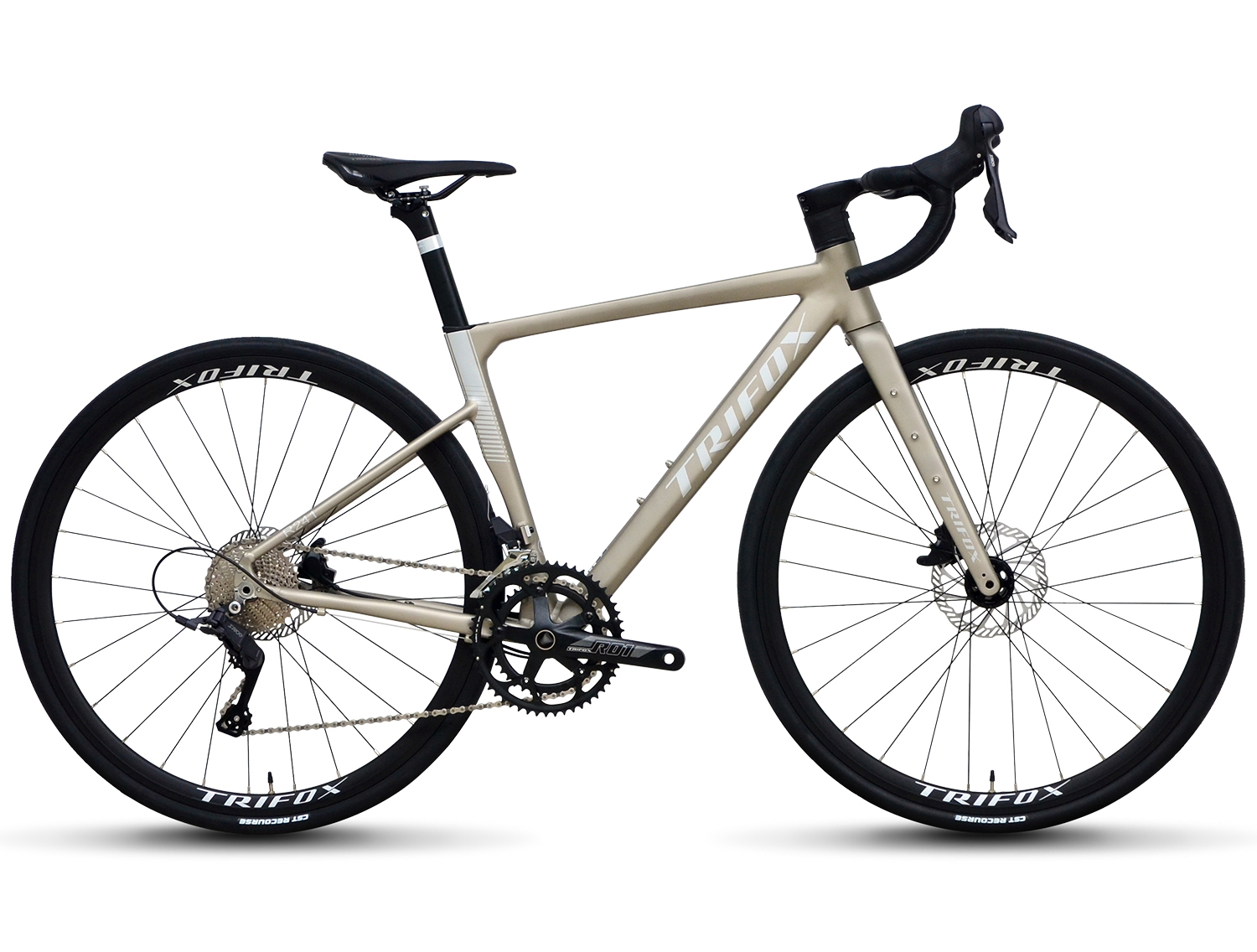
Conclusion
If you’re a speed enthusiast looking to elevate your riding experience, the 11-speed aero road bike is definitely worth the investment. With benefits like precision shifting, superior aerodynamics, better braking performance, and long-term durability, this bike type is built to optimize every ride. Whether you’re a competitive cyclist or a recreational rider aiming for higher speeds, a well-designed aero road bike like the Trifox R241 can help you achieve your goals while providing a thrilling and efficient ride.

























































